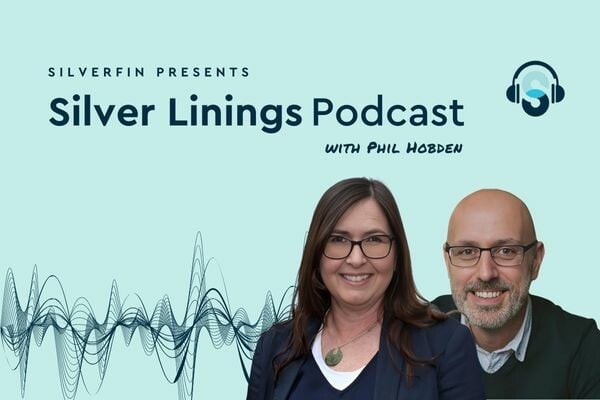Accounting compliance and workflow automation has the power to transform the profession just as it has in bookkeeping. Follow these three steps to harness the true power of automation within your firm.
Unless you’ve been hiding under a rock somewhere, this is nothing new — the industry has been talking about the power of automation for many years now. It’s rightly been described as the key to helping accountants transition into providing advisory services, rather than focusing solely on compliance-related work.
By automating data-heavy, time-consuming, repetitive processes (such as producing annual accounts or working papers), accountants will have more time to focus on advisory work — and they’ll provide their clients with more value.
But according to Silverfin’s Technology Trends in Accounting 2021 report many firms are still failing to harness automation’s true potential.
So how do you take action now to embrace automation?
Follow these three steps to harness the true power of automation within your firm. Free yourself from time-consuming, number crunching and make bold steps forward in your ambitions to be a trusted financial advisor for your clients.
1. Lay a good foundation – create consistent working practices
Automation is fantastic but it will only work when your firm has consistent, standardised working practices and processes that reflect best practice. Think of it like a car — a car is a great tool to get from point A to point B, but you still need the driver to control it (for now at least) and a route if you want to get there quickly and safely. Automation will only work wonders for your firm if you have already established how you get from point A (receiving your client’s real-time data) to point B (for instance, producing a set of annual accounts).
So before you go ahead and invest in an expensive piece of automation-heavy software, first sit down with your colleagues and agree standardised, firm-wide ways of working. Once these have been decided, you can then mirror these processes in your automation-based tool and generate consistent, reliable results. This will result in greater efficiency and speed of course but also quality – less errors, rework and risk. Automation can deliver huge benefits but it can’t deliver miracles — it can’t transform a myriad of bad processes into a good one. If you want automation to optimise a process, it has to be a solid process in the first place.
Fortunately, there’s some good news: 74% of respondents in Silverfin’s recent report believe they have consistent, firm-wide ways of working. The first step to success in automation. But it’s only an improvement of 4% on last year’s report and that means a quarter of all respondents still don’t have consistent, standardised working practices.
I have a standardised way of working that is consistent across the firm for key accounting workflows eg. production of working papers

Not only do inconsistent ways of working affect the client experience, but it also makes effective automation difficult, if not impossible.
So if you want to harness automation to its fullest extent, make sure you first have defined and implemented consistent working practices for key work based on firm and professional best practice.
2. Pick the right technology partner
Automation is best when it reflects best practice and is adapted to your own approach where necessary. Your workflow might be different to that of another firm — and your platform should be able to accommodate this. The best platforms offer accountants the flexibility to automate as and where necessary, in a way that suits them. But as things stand, too many platforms are not giving accountants the capabilities they need.
I can develop my own workflows, reports and services using my technology platform

54% of respondents agreed that they can develop their own workflows, reports, and services using their technology platform. However, the number of respondents who strongly agreed (18%) was down 3% year-on-year. Personalised automation isn’t simply a nice-to-have — it’s a must. If your technology provider promises automation but only on their terms with no flexibility for you to make it your own when you need to or don’t give you the tools to develop additional automated workflows on their technology, then consider looking for an alternative provider.
There’s no excuse to continue using tools that constrain your firm’s ability to do what it does best by following your preferred method.
3. Be brave, be bold — baby steps are not enough
It takes time for innovative technologies to be widely adopted when they’re first introduced to the market. This is especially true, and understandable, when it comes to technology in the workplace. Experienced professionals have often used the same processes for decades and so are hesitant to suddenly change.
Perhaps this is why only 4% more firms strongly agree with the statement that they have automated key accounting practices. Improvement is great — but it’s time to take bold action. Firms that hesitate will quickly fall behind more disruptive, innovative competitors. Neglecting automation is akin to firms that neglected the power of computers a few decades ago.
This hesitancy will simply hamper firm-wide efficiency, accuracy, and keep accountants spending too long on low-value work.
I have automated key accounting workflow and processes eg. working paper, accounts production or tax

You get out what you put in
While automation makes firms and their accountants more efficient, accurate, and productive, it does require some work to get it set up correctly.
Workflows must be consistent and standardised across the firm. Your tool can only automate a set, well-established procedure. If your firm doesn’t even know which steps to follow (and in which order) for every given deliverable, then how will your tool?
Once these processes are nailed down, the next step is to choose the right software. Automation-heavy tools are great, but what you really want is one that can automate according to your specific wants and needs as we saw with our customer Deloitte. Don’t limit yourselves to the boundaries imposed on you by your tool. Instead, seek out providers that offer personalised automation. Benefit from the experience and learning of others with off the shelf workflows if they work for your firm but don’t underestimate the value of having technology that can grow with you as you seek to automate more of your work.
Finally, having established standardised working practices and picked the right software provider, firms must then take bold action. The opportunity is there for the taking — and firms that embrace automation will leap ahead of the competition. Effective automation will enable those firms to devote more time and energy to advisory services which, with increased margins, can underpin successful growth.














